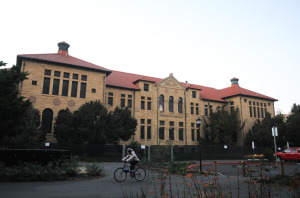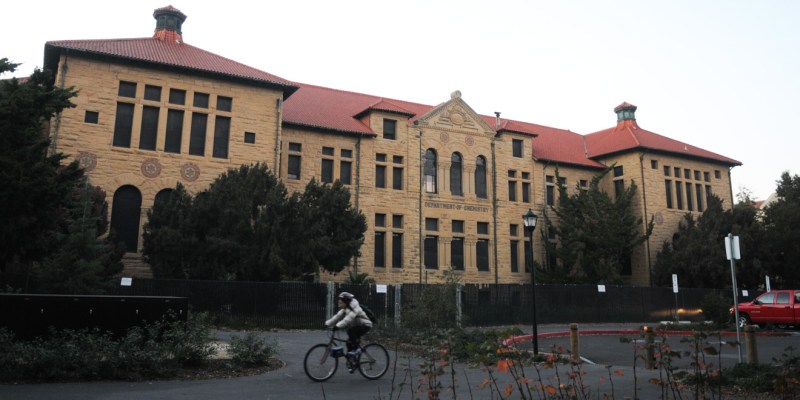In fall 2016, a combined science library will open in the Old Chemistry building. The library will compile the resources of the Mathematics and Statistics, Biology and Chemistry Libraries into one facility.

According to Robert Schwarzwalder, associate university librarian for the Science and Engineering Libraries, the project is designed to downsize physical collections and focus on study spaces and other in-person services.
The greater portion of science library budgets is dedicated to journals and journal subscriptions, which the Stanford community accesses primarily online. For example, 95 percent of the physics materials budget is spent on journals.
More than 90 percent of journal use takes place electronically. Schwarzwalder explained that, as a result, most of the physical resources in the Old Chem library will be books.
Currently, the Math-Stat Library is co-located with the Biology Library in Herrin Hall. During the 2013-14 winter break, materials were moved from the library’s previous location in Building 380, or the Math Corner.
This move freed up space for professor and graduate student offices and began the process of moving some physical resources to storage in Stanford Auxiliary Library 3 (SAL3), a facility located in Livermore, Ca. Resources at SAL3 may be paged for delivery to campus, and most are available online in digital form.
Stanford Libraries are currently in the process of continuing to downsize the physical collections of the science libraries. Schwarzwalder noted that this practice looks different for each department because advancements occur along distinct timelines.
“For instance, molecular biology is a fast-moving area, the breakthroughs are fairly rapid, and literature that is five years old is pretty old. But in certain areas of mathematics, something done a hundred years ago is still as relevant today,” Schwarzwalder said. “So the material ages at different rates so you can cut materials from year more in one discipline, and we take a very nuanced approach to that.”
Simultaneous to the downsizing of physical materials, excavation and construction are taking place for the lower level of the Old Chemistry building, which will contain two large auditoria and classroom spaces.
The project’s motivation is serving the needs of library users, and Schwarzwalder believes that the combined space, rather than a number of smaller libraries, will achieve this.
“The difficulty is that when you’re so thinly staffed, mostly all you can do is keep the doors open and the books on the shelves,” Schwarzwalder said. “What we found is a demand for other services — advanced reference services, workshops integrated with classroom instruction. When we combine libraries and staff, we put a greater emphasis on service and keep doors open longer.”
Schwarzwalder hopes that the reopened Old Chemistry building, including the new library, will be a hub for students of all disciplines, and the library will be a study space that is able to offer improved services and workshops through combined resources and staff.
He explained that both undergraduate and graduate students use books more than faculty do, as faculty tend to use library resources more for electronic collections. His vision is that the design of the Old Chemistry library will focus on better serving these customized needs.
Contact Sarah Moore at smoore ‘at’ stanford.edu.
